Say what you will about the Learjet 45, but I think it was one of the best looking business jets ever produced. It’s ultra sleek, fairly compact, and it’s got a cool “retro” vibe to it that I don’t see in other business jets from this era.
Unfortunately, the 45 didn’t have the best reputation for being a reliable aircraft. I didn’t realize this before doing the research to illustrate the templates below, and I’ll admit that it hurt to find out that one of my favorite business jets of all time was a bit of a turd.
Side view templates of the Learjet 45
One of the other things that I leaned about the Learjet 45 as I was doing these illustrations was the fact that the wing is relatively tiny compared to other modern business jets. For example, if you place these templates right next to my Gulfstream G650ER templates, the difference will be obvious. And a bit comical if I’m being honest.
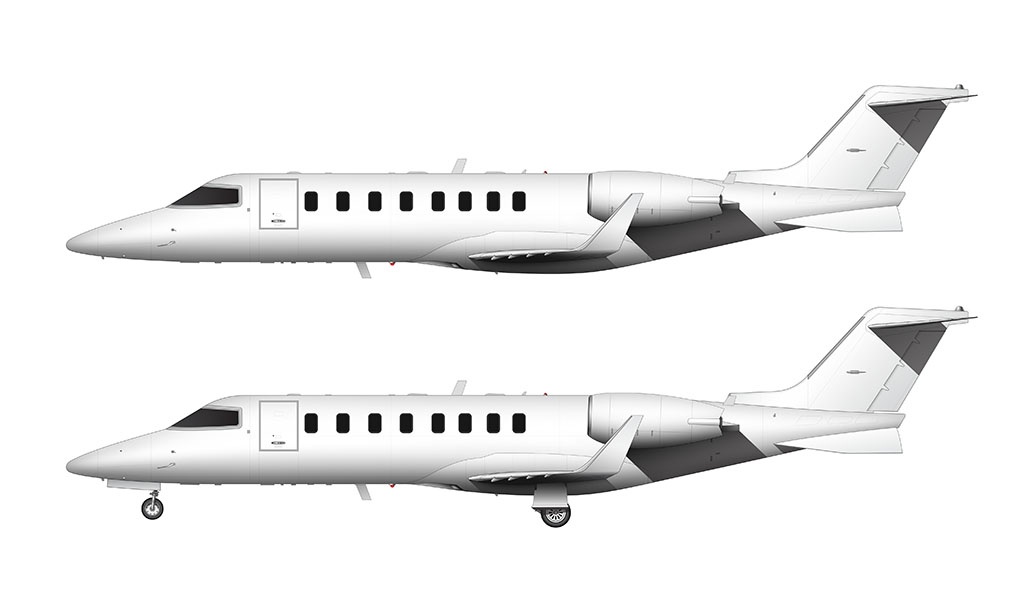
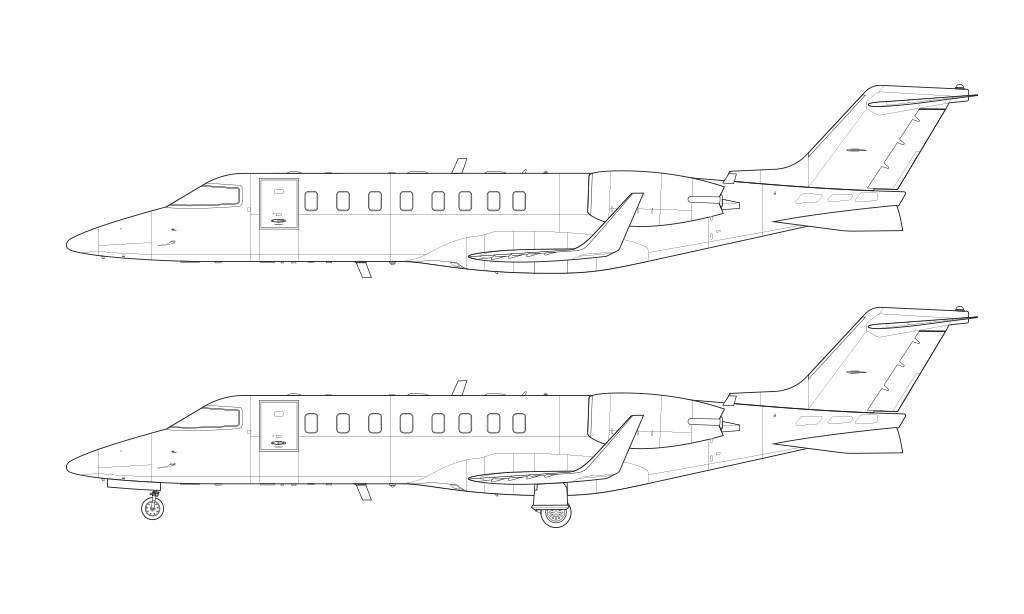
Despite the tiny wing and reliability issues, I’m still as much of a fan of the Learjet 45 as I was before I began working on these illustrations. It’s a beautiful airplane (faults and all).

What exactly is a Learjet 45?
The Learjet 45 is a small, eight-seat, twin-engine, super-light aircraft built for corporate (private) use. It’s a medium-range jet with a maximum cruising speed of 460 miles per hour and can reach an altitude of 51,000 feet. Power to weight ratio is very good, giving it the ability to travel at much faster speeds than many other aircraft of this size.
Bombardier Aerospace designed and developed the Learjet 45 to replace the older Learjet 35.
While the prototype flight took place in 1995, delays with FAA certification meant the 45 didn’t officially enter the market until early 1998. Production ended just ten years later.
How is a Learjet 45 different from a Learjet 40?
After producing the 45 for four years, Bombardier designed a slightly smaller version ideal for shorter flights. This variant became known as the Learjet 40.
The 40 and 45 are quite similar to one another. They have the same engines, control systems, and cockpit design. However, the slightly shorter fuselage the 40 results in less interior cabin space than the 45. It can fly up to seven people (compared to eight in the 45), and can operate shorter segments (such as New York to Chicago) more efficiently.
Learjet 45 vs. Citation X
The main difference between the Learjet 45 and the Cessna Citation X (besides how they look) has to do with speed and range. Both planes have a ceiling of 51,000 feet, but the Citation X can travel at a speed of up to 525 mph, whereas the Learjet 45 can only go 460 mph.
A Citation X also has more than twice the range of a Learjet 45 (3,140 nautical miles). It takes more runway to get a Citation off the ground and to safely land than a Learjet 45, giving the 45 a bit more versatility.
You’ll pay considerably more for a crew (and a hangar) with a Citation X than you will with a Learjet 45. If you want a Citation X, expect to pay double the amount (for everything) than you would for the 45.
Interesting facts about the Learjet 45
Here are some other fun facts about the Learjet 45 that I uncovered during my research:
Range
Learjet 45s can fly 1,420 nautical miles (1,635 land miles). To put it another way, a Lear 45 can fly from JFK International Airport in New York City to Minneapolis-St. Paul, Miami, or Dallas-Fort Worth nonstop.
Compared to other business jets such as the Bombardier Global 7500 or the Citation X, that’s not a lot. This is not a business jet ideal for long-haul international travel.
Safety and stability
During certification testing, test pilots stalled the Learjet 45 over 3,000 times. This sort of extensive testing helped to make the Learjet 45 one of the most stable aircraft ever built.
Many aircraft will pitch forward (nose down) during a stall. They might also start to roll to one side. The Learjet 45 does not. As a result, passengers may not even feel the plane stall at all (rhyme intended). This kind of stability also makes it easier to land the plane safely at unusually low speeds.
Seating capacity
Learjet 45s are equipped with 8 seats. However, the toilet in the lavatory can convert to a ninth legal seat if necessary. So technically, if space is tight, you may be told to sit on the toilet for the duration of the flight. How cool (and unfortunate) would that be?
Opinions have changed drastically over the last 15 years
In the early days, operators both loved and hated the Learjet 45. At the time, they appreciated its performance, payload capacity, and more. However, it was a maintenance nightmare and owners found themselves frustrated whenever they had to ground their planes due to mechanical problems.
To compound the maintenance issues, mechanics had trouble getting parts and support on time.
By 2017, these problems had largely been resolved. Opinions of the aircraft changed, and most owners came to regard the Learjet 45 as a highly reliable workhorse (often referring to it a “gas-and-go” airplane).

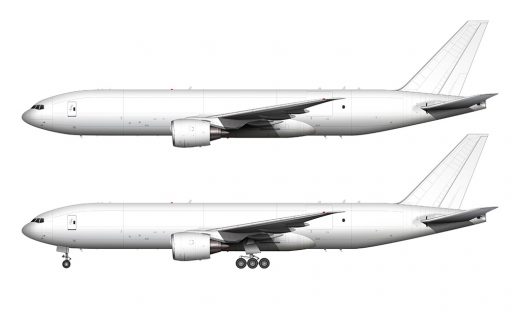
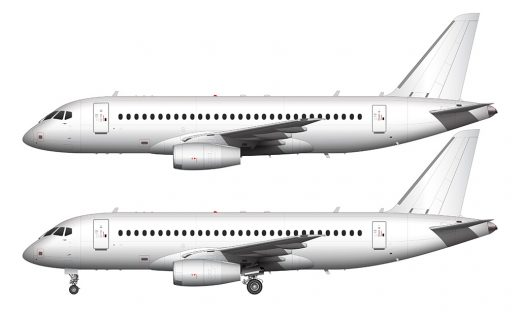
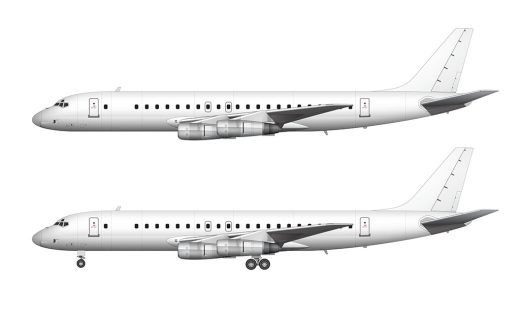
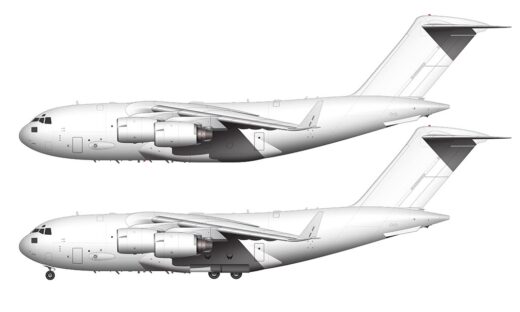
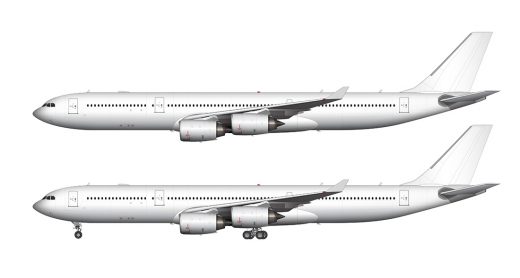

Love it! What do you plan on doing next?
Thanks man! I’m thinking about doing another Russian aircraft – but I’m not sure which one yet.
If you’re planning a Russian aircraft again… It would be cool to see the new Il-114-300 or older the Tu-124 or Yak-40. That said, I would love to see a “fantasy” bird again like your 70/72/75/79 Max series… but perhaps the new Embraer pusher config turboprop rendering.
There’s so many I want to do! I’m leaning towards the Tu-124 right now, but we’ll see…
You could do a TU-104 and the TU-124, together as they are very similar aircrafts with the 124 being just smaller in every way from the 104, apart from that keep up the good work!
Good idea, thanks! I’ve already started on the 204 – but I will get to the 104 and 124 eventually.
cool
Thanks James!
Would love a Global Express next. Great work!
Thanks jack! That just very well may be my next business jet.
Great as usual Scott, what’s up next?
Thank you! Probably a classic Russian aircraft of some kind? Maybe the Tu-124. Maybe.
Congratulations Scott.
I love your job
Has it ever crossed your mind to illustrate helicopters?
Thank you! To be honest, I haven’t had any desire to do any helicopters. That doesn’t mean that I’ll never do any though – it might be fun to try!
Amazing, please make Learjet 35A possible.
Yeah, I’ve got a whole list of Learjets to do. There are so many!
Pls make HondaJet, it’ll be funny XD
But it might be cool as well!
Will you be doing Learjet 60 and Learjet 35A please?
I do need to do more Learjets. So many to choose from!
Start with the LJ 60 and 35 please please please. When do you think you will do them please?
Honestly, it’s not going to be immediate. The A321P2F is next, and then it’ll be the SAAB 2000. I may be able to squeeze out a Learjet of some kind first though, as it will be a lot simpler / faster compared to the SAAB. I’ll definitely start with the 60.